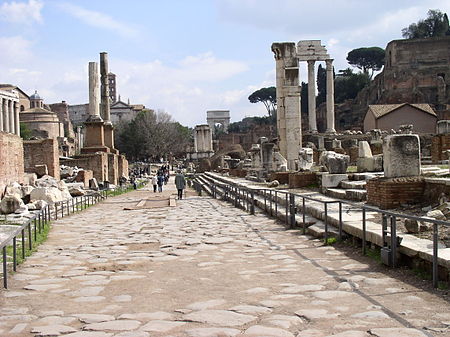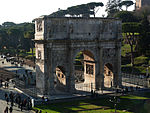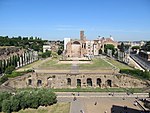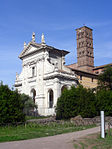Via Sacra

The Via Sacra (Latin: Sacra Via, "Sacred Street") was the main street of ancient Rome, leading from the top of the Capitoline Hill, through some of the most important religious sites of the Forum (where it is the widest street), to the Colosseum. The road was part of the traditional route of the Roman Triumph that began on the outskirts of the city and proceeded through the Roman Forum. Later it was paved and during the reign of Nero it was lined with colonnades. The road provided the setting for many deeds and misdeeds of Rome's history, the solemn religious festivals, the magnificent triumphs of victorious generals, and the daily throng assembling in the Basilicas to chat, throw dice, engage in business, or secure justice. Many prostitutes lined the street as well, looking for potential customers. From the reign of Augustus, the Via Sacra played a role in the Apotheosis ceremony by which deceased Roman Emperors were formally deified. The body of the Emperor, concealed under a wax death mask, was carried on a pall from the Palatine hill down the Via Sacra into the Forum, where funeral orations were held before the procession of Knights and Senators resumed its course to the Campus Martius.
Excerpt from the Wikipedia article Via Sacra (License: CC BY-SA 3.0, Authors, Images).Via Sacra
Via di San Teodoro, Rome Municipio Roma I
Geographical coordinates (GPS) Address Nearby Places Show on map
Geographical coordinates (GPS)
| Latitude | Longitude |
|---|---|
| N 41.89 ° | E 12.49 ° |
Address
Palatino
Via di San Teodoro
00184 Rome, Municipio Roma I
Lazio, Italy
Open on Google Maps











